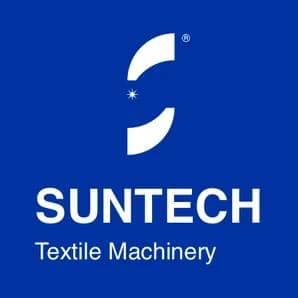In today's increasingly competitive textile manufacturing market, product quality has become a key factor in achieving success. In the actual production process, many companies have been plagued by problems such as frequent fabric defects, unstable manual inspection, and high rework costs. How to reduce waste and improve efficiency while ensuring quality? AI visual recognition technology is becoming a powerful assistant in the textile industry's pursuit of high-quality development.
Why are Fabric Defects Missed?
Traditional fabric inspection primarily relies on manual methods, where operators visually inspect the surface of fabrics based on their experience to identify holes, oil stains, yarn defects, and other issues. However, this method has obvious shortcomings:
Visual fatigue affects judgment: long-term inspection can easily lead to inattention, especially night shift operation, and the missed inspection rate increases significantly.
Inconsistent artificial standards: each inspector has different judgment standards, resulting in insufficient consistency in inspection.
Speed is difficult to match the rhythm of the production line: manual inspection speed is much slower than modern high-speed weaving and printing, and dyeing equipment, which can easily form a bottleneck.
These problems cause a large number of hidden defects to flow into the subsequent processes, ultimately resulting in rework, scrapping, customer complaints, and even brand reputation damage.
Changes Brought by AI Visual Inspection
The combination of artificial intelligence and industry has led to the emergence of AI visual recognition systems. This system is usually composed of high-definition cameras, image processing modules, and deep learning algorithms, which can achieve high-precision, full-width real-time scanning and intelligent analysis of the surface of fabrics.
Its advantages are reflected in the following aspects:
24-Hour Uninterrupted Operation
The AI system is not affected by environmental changes, time factors or operating emotions, and can run 24 hours a day, always maintaining high consistency recognition capabilities, and eliminating the problem of manual fatigue misjudgment.
Response Speed
The detection speed of modern AI cloth inspection equipment can be synchronized with high-speed weaving machines or dyeing and finishing production lines, without stopping for inspection, and accurate identification can be completed without interrupting the production rhythm.
High-Precision Defect Judgment
The AI visual recognition system is equipped with a high-resolution industrial camera, combined with a deep learning algorithm, which can identify hundreds of common defects including pinholes, yarn knots, color differences, pollution, broken wefts, etc., and can even make intelligent classification and marking according to the shape and position of the defects.
Data Recording and Traceability Function
The system will automatically record the location, type, quantity, and other data of defects, and generate maps and reports, which will facilitate the rapid positioning and review of quality inspectors, greatly improving the efficiency of rework. At the same time, it also supports docking with the MES system to achieve full-process quality traceability.
Helping Enterprises Reduce Waste
The reduction in defect rate directly leads to the saving of raw materials and the improvement of production efficiency. Every piece of defective fabric that is accurately identified and removed is a loss recovered for the enterprise.
In the past, repeated rework and whole batch returns due to "missed inspection" were now accurately discovered and isolated at the beginning of production through AI visual recognition, avoiding the expansion of the problem from the source. At the same time, enterprises no longer need to rely on "multi-layer manual re-inspection" to ensure quality. This change is particularly critical today when labor costs continue to rise.
In addition, as customers' requirements for quality continue to increase, product consistency and stability have become important criteria for large customers to place orders. The accurate recording and traceability of AI cloth inspection provide a solid foundation for enterprises to win high-quality orders and improve bargaining power.
AI System "Gets Smarter with Use"
Unlike traditional rule-based detection, AI visual recognition is based on deep learning algorithms. This means that it does not "solidify" standards to judge defects, but forms a more flexible and accurate judgment model after continuously learning massive cloth defect samples.
As the system runs longer, the more fabric types and defect samples there are, the stronger the system's recognition ability becomes, and it can even identify "hidden defects" that are difficult to detect manually - this is the core of the AI system's "getting smarter with use".
Adaptability to Different Textiles
Whether it is light chiffon, heavy denim, or stretch knitwear, the AI visual recognition system can make intelligent adjustments based on fabric texture, tissue structure and other characteristics.
For fabrics with glossy or reflective properties, the AI system will automatically adjust the fill light and imaging parameters to avoid misjudgment caused by "light interference". For elastic or irregular fabrics, high-speed motion compensation algorithms are used to ensure image continuity and stability, truly achieving "adaptation to multiple categories and adaptation to multiple processes".
Conclusion
AI visual recognition is not only a replacement for fabric inspection equipment, but also a key tool for textile companies to move towards intelligent manufacturing and precise quality control. Reducing defect rates, reducing rework waste, and improving quality consistency allows companies to stand out in the increasingly fierce market competition.
In the future, this intelligent identification technology will be deeply integrated with production control systems and warehousing and logistics systems to achieve full-process quality monitoring from the entry of raw materials into the factory to the delivery of finished products, truly moving towards a digital textile factory with "no blind spots and zero waste".







